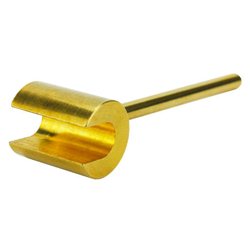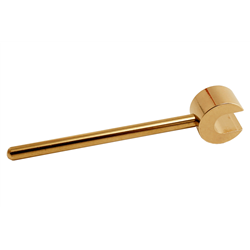There are a number of different options for attaching figures such as a horse and rider to a layout. Perhaps the...
No products
Product successfully added to your shopping cart
There are 0 items in your cart. There is 1 item in your cart.
Search Tips
What is the difference between gauge and scale?
The dictionary defines gauge as "the distance between the two rails on a railway line" and scale as "the scale of a map, plan, or model is the relationship between the size of something in the map, plan, or model and its size in the real world".
In the world of model railways, the two terms are often used interchangeably to communicate the size of models.
We are quite used to hearing the terms 00 Gauge, 1:87 scale, 4mm scale or even loading gauge, but what do all of these terms mean?
"Gauge" in model railway terms means exactly the same as in real-life or the dictionary: it is the size of the track, more specifically the measurement between the rails. With gauge, consumers and manufacturers know where they stand: an 0 gauge train will be the correct size to run on 0 gauge track, an H0 gauge train on H0 track and so on.
"Scale" is not a term unique to model railways. It is used to identify how small any model is in relation to its real-life prototype. It is usually displayed in number form, the first digit represents the model, followed by a number that represents how many times bigger the prototype is, so a model with a prototype 100 times bigger than the model will have a scale of 1:100.
Sometimes the scale of a model is displayed as a measurement in millimetres. For example 1:87 scale (H0 gauge) could also be written as 3.5mm scale, this simply means that 3.5mm of the model is equivalent to 1 foot in real-life. There is no difference in size between a model that is H0 gauge, 1:87 scale or 3.5mm scale. It is just a different way of communicating the size of the model.
Over the years model railways have evolved into much more than a family toy that races endlessly around the lounge carpet. As such, the modeller's vocabulary has evolved too with the terms scale and gauge now being used to describe much more than just the mere size of a locomotive.
Scale speed, for example, is how fast a model would be going if it was full-size. Scale distance is how far any given real-life distance would be in the model's miniature world. Finescale models have as many aspects of the model in scale with its prototype as possible (unlike conventional models which make certain sacrifices in favour of consistent and capable running) and loading gauge is the maximum height and width that rolling stock is permitted to be on a particular gauge of track.
There is no right or wrong answer as to how much of the different terminology you need to know or have an understanding of. If you are just starting out, then gauge will be quite enough for you to make purchases, select publications and chat to other modellers about your projects, only if you wish to progress into scratch-building or take an interest in ultra-realism will the deeper subject of scale really come into play.
Click here to receive the tips weekly in your mailbox. You can unsubscribe at any time.










